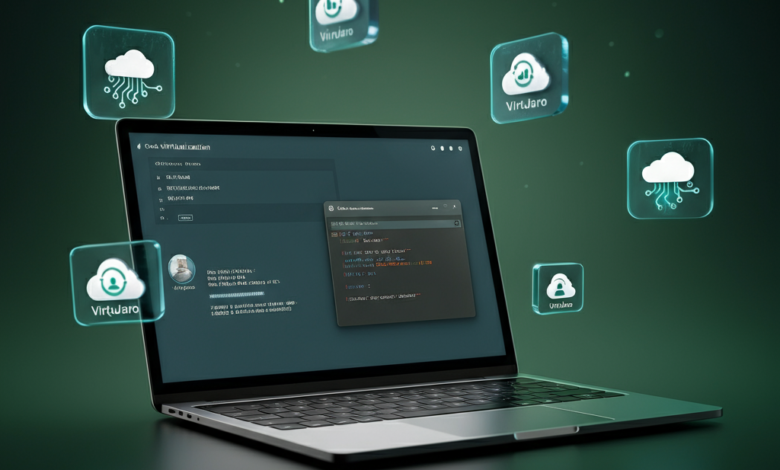How to Check for Virtualization Support in Manjaro

Virtualization has become a crucial aspect of modern computing, enabling users to run multiple operating systems or applications in isolated environments on a single machine. Whether you’re a Linux user, a Manjaro enthusiast, or a software developer, understanding how to check for virtualization support is vital, especially if you want to use tools like VirtualBox, VMware, or KVM.
This guide provides a comprehensive, step-by-step overview of checking for virtualization support in Manjaro Linux. We’ll cover both command-line and GUI-based methods, troubleshoot common issues, and discuss the benefits of virtualization for users and developers alike.
Why Check for Virtualization Support?
Virtualization allows you to run virtual machines (VMs) on your computer. However, to take advantage of virtualization technology, your hardware must support it, and it must be enabled in your system’s BIOS or firmware settings. Checking for virtualization support is essential for the following reasons:
- Compatibility: Ensure your hardware can handle virtualization tools like VirtualBox, KVM, or Docker.
- Performance: Verify that your CPU supports hardware virtualization (Intel VT-x or AMD-V), which enhances VM performance.
- Troubleshooting: Identify and resolve issues that may prevent virtual machines from running correctly.
If you’re ready to start using VMs on Manjaro or want to understand your hardware’s virtualization capabilities, here’s how to check.
How to Check Virtualization Support in Manjaro Using the Command Line
Manjaro, being Arch-based, gives Linux users a highly customizable framework. With just a few terminal commands, you can determine your system’s virtualization support.
Step 1: Open the Terminal
Use the shortcut Ctrl + Alt + T, or search for “Terminal” in the Manjaro application menu to open it.
Step 2: Check CPU Info
Run the following command to view your CPU’s capabilities:
lscpu
This will display detailed information about your CPU. Look for the following flags in the output:
- For Intel processors, check for the
vmxflag. - For AMD processors, check for the
svmflag.
Example output:
Flags: fpu vme de pse tsc msr pae mce cx8 apic sep mtrr vmx
If you see vmx or svm under the Flags, your CPU supports hardware virtualization.
Step 3: Check Virtualization Status
To confirm that virtualization is enabled, run:
egrep -c ‘(vmx|svm)’ /proc/cpuinfo
This command inspects the CPU flags and returns a count:
- If the output is
1or higher, virtualization is supported. - If the output is
0, your CPU does not support virtualization or it is disabled in the BIOS.
Step 4 (Optional): Use virt-host-validate
If you’re planning to use KVM virtualization, you can install the libvirt tools and validate your system:
sudo pacman -S libvirt
virt-host-validate
This runs a series of checks to ensure your system is ready for KVM-based virtualization.
Checking for Virtualization Support Using Manjaro GUI Tools
Not comfortable with the command line? Manjaro also provides tools with GUI interfaces for checking system specs, including virtualization support.
1. Using System Information Tools
-
-
- Open the “System Info” or “About” tool from the system settings menu.
- Look for details about your CPU and check for virtualization flags (
vmxorsvm).
-
2. Use Hardinfo Tool
-
-
- Install
hardinfousing the terminal:
- Install
-
sudo pacman -S hardinfo
-
-
- Launch
hardinfoand go to the CPU section to view the flags list.
- Launch
-
3. Ukuu for Kernel Information
-
-
- If you’re using multiple kernels, you might need to check your kernel support for virtualization. Tools like Ukuu (Ubuntu Kernel Update Utility) can help you visually manage and verify this.
-
Troubleshooting Common Issues
If you don’t see vmx or svm in your CPU flags or virtualization doesn’t seem to be working as expected, follow these troubleshooting steps:
Enable Virtualization in BIOS/UEFI
- Reboot your system and enter the BIOS/UEFI firmware settings (usually by pressing Delete, F2, or Esc during boot).
- Navigate to the “Advanced” or “CPU Configuration” settings.
- Look for the “Intel VT-x” or “AMD-V” option and enable it.
- Save changes and reboot.
Missing BIOS/UEFI Options
If virtualization options don’t appear in your BIOS/UEFI menu, your motherboard’s firmware may not support enabling this feature. Check your motherboard’s manual or manufacturer website for firmware updates.
Ensure Proper Kernel Modules are Installed
Make sure your Manjaro system has the necessary modules:
- KVM modules for full virtualization.
- VirtualBox modules for Oracle VirtualBox.
To check:
lsmod | grep kvm
If no output is returned, you may need to load the modules manually:sudo modprobe kvm_intel # For Intel
sudo modprobe kvm_amd # For AMDWhy Virtualization is a Game-Changer for Manjaro Users
Virtualization offers immense benefits to Linux users, especially those on Manjaro:
Flexibility for Developers
Run multiple operating systems or test software in isolated environments without disrupting your host system.
Safe Testing Environment
Experiment with new software, configurations, or even Linux distributions within a virtual machine to avoid impacting your primary setup.
Enhanced Productivity
Streamline workflows by creating reusable VM templates for tasks like testing, development, or even daily computing.
Cost Efficiency
Instead of investing in additional hardware, use virtualization to fully utilize your existing resources.
Whether you’re a seasoned developer, an IT professional, or simply a Linux enthusiast, virtualization gives you the freedom to create, test, and implement seamlessly.
Explore the Power of Virtualization Today
Virtualization is an essential tool for modern computing, offering flexibility, efficiency, and safety. With this guide, you can easily check and enable virtualization support on your Manjaro system, ensuring you’re ready to leverage the full potential of VMs.



